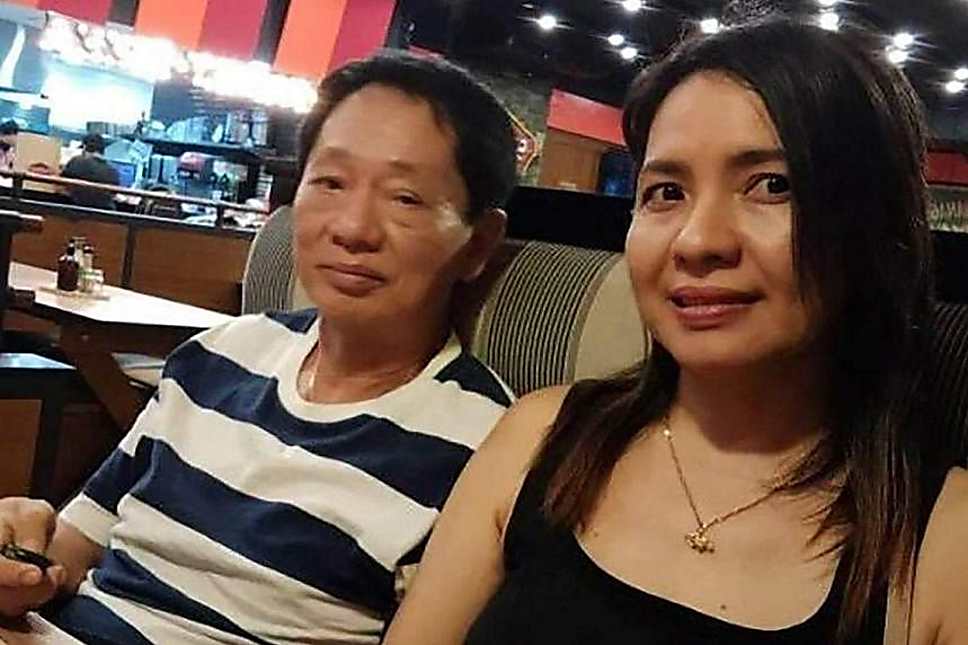Reflections on dying at home
Many want to die at home but this is an intricate affair, involving many stakeholders and hard choices, says a doctor who has engaged with many dying patients and their families

As a physician specialising in hospice and palliative care for over two decades, I am often asked: “What is a good death?” While seemingly intuitive, there is no simple answer that applies to everyone. Preparing for death is really far more complex than most people think.
There has been much discussion of late surrounding dying at home. While it is encouraging that the topic of dying in place is finally put under the spotlight, we should not, however, oversimplify the matter.
Dying at home is an intricate affair. It involves many stakeholders, multiple considerations, support systems, personal trade-offs, and ultimately making very hard choices. It is hardly a linear process.
Patients may end up bouncing between the hospital and home for a variety of reasons, even if the intent to die at home is clear. Sometimes, unexpected and rapid deterioration of illness could derail plans to go home.
The fact of the matter is, the difficult decisions made when a loved one is dying are never simply black or white, but involve many shades of grey.
Home, the final pit-stop
A patient of mine, a young woman with cancer of the womb that was widespread and incurable, was admitted to hospital for management of complications from her cancer treatment. Things were not looking good.
She longed to return home to her two children, who hadn’t been told of her illness yet, and to her distraught husband, who busied himself at work and proved hard to contact. She worried deeply about what might happen to the family after her demise. Most of all, she missed being home with them.
The ward team considered discharging her to home, but her condition deteriorated too quickly for arrangements to be put in place. She eventually died peacefully in the hospital, surrounded by her children and husband in a single room assigned to the grieving family.
Struggles at life’s end around letting go and specifically the place of death vary for patients in different age brackets. It is worth unpacking why there is a desire for dying at home from the perspectives of the patients and families I had the privilege to meet.
Anecdotally, my colleagues and I have observed how our elderly patients seem to intuitively know when they are nearing the end of their life course, and have insisted on staying put at home no matter what happens. Many are not afraid of death itself, but fear the suffering of dying. Yet another reason why they seek to shun the hospital is their fear of never returning home.
Family caregivers who agree to bringing their dying loved one home also struggle emotionally. They have likely accepted the looming spectre of death, and while they may be apprehensive about how to manage their dying loved one at home, they act out of love and other valid concerns. They fear not being there as their loved one breathes their last, or worry that nursing staff in hospitals may not understand their loved one’s needs as well as they do.
The context is a little different among the younger ones in their 30s or 40s who are dying, often from aggressive cancers that defied even modern treatments. When science can’t fix their bodies, they consider other options. At a deeper level, it often involves the difficult process of letting go to preserve what is left for whatever time remaining.
Contrary to perceptions of hospice clinicians being avid prescribers of morphine or other treatments to relieve suffering, the main bulk of our work involves fostering insight and acceptance. We help our patients and their families navigate the choppy journeys of terminal illness, mapping old routes and plotting new detours. In our experience, these serious discussions always end at a common destination – a wish to return home.
Choosing where to spend the last days of life may not be contingent on a dying patient’s wishes alone. Other considerations could supersede individual wishes. Concerns over burdening the family, lack of reliable caregivers and overwhelming nursing care needs are chief reasons. Unanticipated medical crises and moments of hesitation, such as changing one’s mind to try active treatments again, can see patients readmitted to the hospital. These are legitimate pit-stops during the roller-coaster ride of illness.
No party should be made to feel guilty when home care plans fail. Both family caregivers and professional providers do not need more burden than they are already carrying. This is where the Health Ministry’s efforts to promote home deaths for dying patients need to be nuanced and circumspect, lest good intentions backfire.
Where is home, truly?
What constitutes “home” to a dying patient can depend on individual circumstances, and this has practical implications. For someone cared for in a nursing home, the centre becomes his home and the staff within becomes his family. Some long-term residents told us that if they ever became critically ill, they should continue receiving care in their own nursing home to the end.
Separately, using charitable funding, colleagues in an inpatient hospice and palliative care facility in a community hospital have, in collaboration with HCA Hospice, conceived a novel project to allow single loners who live in rental flats to go back home to die when they are terminally ill.
This acknowledges that even if they do not own that humble flat, it is to them a sanctuary where they had spent most of their lives, including every entity around the neighbourhood that previously offered companionship. Even without family huddling around in the tiny unit, to them, it is still the best place for their final rest.
Home, to others may not even be physical location, but a sense of togetherness. This is best illustrated by a bereaved father of a five-year-old who had incurable cancer. He shared: “It is very easy to fill up a child’s mind... Just being with her and respecting her... When a child is in that situation, the question should be what environment should we wrap around her. So create home, wherever it is!”
Ultimately, it is the attitude and spirit we bring to patients and families that matter, whether death happens in a hospital, facility or home. This brings us back to “What makes a good death?” It is after all the final performance indicator we set for ourselves as professional hospice providers.
What makes a good death?
In my years of experience, the attributes of a good death in the context of dying from a serious illness converge along three common themes: comfort, marked by the lack of suffering; control, in being able to make decisions on care or being prepared for the inevitable; and community, such as being surrounded by family and acknowledged as a unique individual, till the very end.
While these ideals are attainable within the hospital setting conceptually, some of them may be difficult to render practically. One remembers the heartrending accounts of physical and emotional isolation in the recent Covid-19 pandemic, where families were separated from dying loved ones during the most crucial moments.
Such fears may explain the desire for dying at home. However, a word of caution is appropriate at this point.
When stars and help align
It takes tremendous effort and commitment to make a home death possible, smoothly and safely, that is. For one, it is imperative to have a consistent and competent caregiver at home.
This is not an easy task even if there are regular visits by doctors and nurses, and the caregivers are given training, and free loans of hospital beds and oxygen concentrators.
They can even be given respite, when patients are dropped off at a day hospice or are cared for temporarily by volunteers or paid help. Still, caregivers at home often struggle under the weight of responsibility and risk bearing regret if things go wrong. Financial commitments are often concerns too.
Enabling death with dignity
We have come a long way since the 1980s, when home hospice support first became available in Singapore. My grandfather who died from cancer of the voice box was one lucky beneficiary.
Palliative care that benefits everyone at any phase of a serious illness is now available in hospitals, clinics and dedicated inpatient facilities, including nursing homes.
But, in my observation, when supportive care is actually needed, many are still at a loss on where to look. Having trained, served and advocated in this space for a long time, I firmly believe that we need a “systems” approach to delivering end-of-life care.
Policymakers must allocate resources to enable service providers to bring care to those who most need it. The Health Ministry has committed to reviewing financing frameworks to improve access to palliative care.
Relevant stakeholders in the healthcare ecosystem must continue to partner each other to ensure the continuity of care, so that support never lapses as a vulnerable patient transits between the hospital and home.
Lastly, caregivers must be empowered to deliver care themselves, through comprehensive home-based training. The financial burden of families should be eased through assistance schemes or extending services for free, which larger home hospice providers like HCA Hospice already do.
It makes sense to bring dying back into the mainstream, confronting the inevitable head on, starting with increasing the proportion of people who could die at home according to their wishes.
What is even more important is to ensure that no matter where death occurs, it should be one characterised as dignified, peaceful and most of all, without regrets.
- Dr Chong Poh Heng is the medical director of HCA Hospice, Singapore’s largest and oldest home hospice provider and a charitable organisation. He is also the vice-chairman of the Singapore Hospice Council.
Join ST's Telegram channel and get the latest breaking news delivered to you.








No comments:
Post a Comment